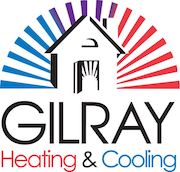
If you’re thinking about air conditioner installation in Wausau, you should also be looking at your new air conditioner’s SEER rating.
SEER stands for Seasonal Energy Efficiency Rating. In a nutshell, it gauges how effective your air conditioner is at changing electricity into cold air. A bigger number means your air conditioner is more efficient, which is good for your electric costs.
However, there are many differing models to choose from for air conditioners. And a higher SEER rating frequently is accompanied by a higher price tag. So, how can you determine which one is best for your residence?
At Gilray Heating and Cooling, we give you a free, no-pressure home comfort analysis. You can book one by contacting us at 715-301-0727. Our knowledgeable air conditioner installers will partner with you to help you pick the right air conditioner for your home. Plus, they’ll also provide you with a free, no-obligation estimate.
For the time being, let’s review SEER ratings and how they can affect your loved ones’ comfort. And your energy bills.
Why Do the SEER Ratings Really Matter?
In 2016, the federal government made new SEER rules. New air conditioners are mandated at least 13 SEER in the north United States and 14 SEER in the southeast and southwest. If you’re unsure when you had your air conditioner put in or what its SEER ranking is, you can look at the sticker on the system outside your house. If you can’t find the sticker, you can give us a call at 715-301-0727 for help.
If your air conditioner was installed prior to that date, it’s likely much less efficient. Air conditioner technology has quickly changed in the past several years, with major progress in energy efficiency and smart home capability. Connecting your new air conditioner with a smart thermostat could help you spend less on electrical costs, as the thermostat can intuitively regulate your temperature settings when you’re away.
If your present air conditioner has a SEER rating between 8 and 10, adding a 14-SEER system could save you an estimated 30–50% on annual air conditioning expenses. Your savings depend on your air conditioner size and your thermostat settings.
Is the Higher the SEER the Better?
An air conditioner with a better SEER rating will be more efficient at converting electricity for cooling. The highest efficiency models, which can go as great as 26 SEER, include ENERGY STAR® designation. This certification signifies the air conditioner has achieved EPA rules for energy savings and environmental conservation.
While ENERGY STAR air conditioners are typically pricier, you’ll normally get the difference back over time through smaller air conditioning costs. These air conditioners, which are generally rated 16 SEER and greater, consume about 8% less power than other new systems, according to ENERGY STAR.
One of the largest differences between a 14 SEER and 16 SEER is variable-speed capability. A variable-speed air conditioner can run at a number of speeds. This fine-tunes comfort for your home while keeping your electric costs low. It can also keep temperatures and humidity more balanced, since it can operate for longer without consuming a lot more electricity.
When installing a variable-speed air conditioner, you’ll need to check that your furnace or air handler is compatible. This is due to the fact your air conditioner relies on this unit’s blower to send cool air around your house. Furnaces only last for about 20 years, so if yours is around that age, we suggest getting furnace installation at the same time so you can receive all the benefits of your variable-speed air conditioner.
When you’re prepared to replace your air conditioner, the cooling professionals at Gilray Heating and Cooling are here to support you. Give us a call at 715-301-0727 to request your free home comfort analysis right away.
